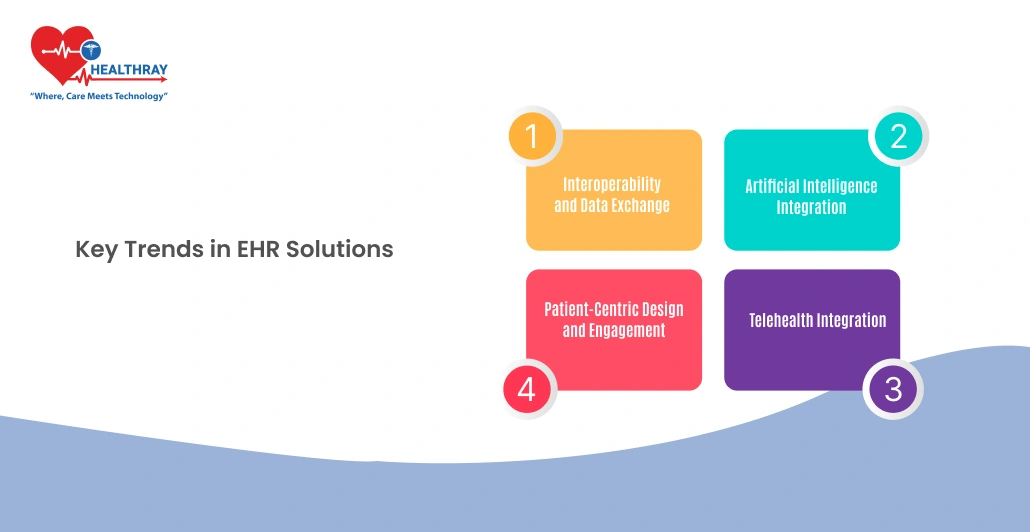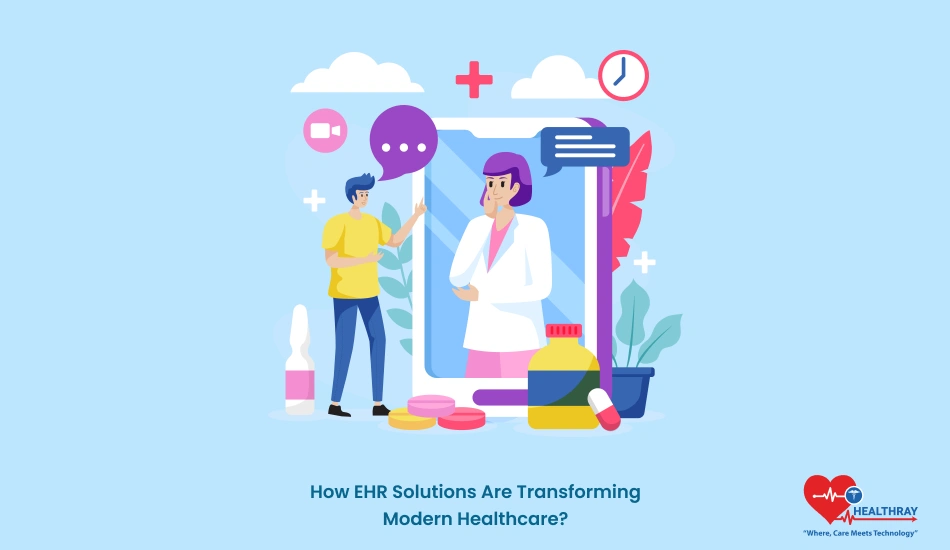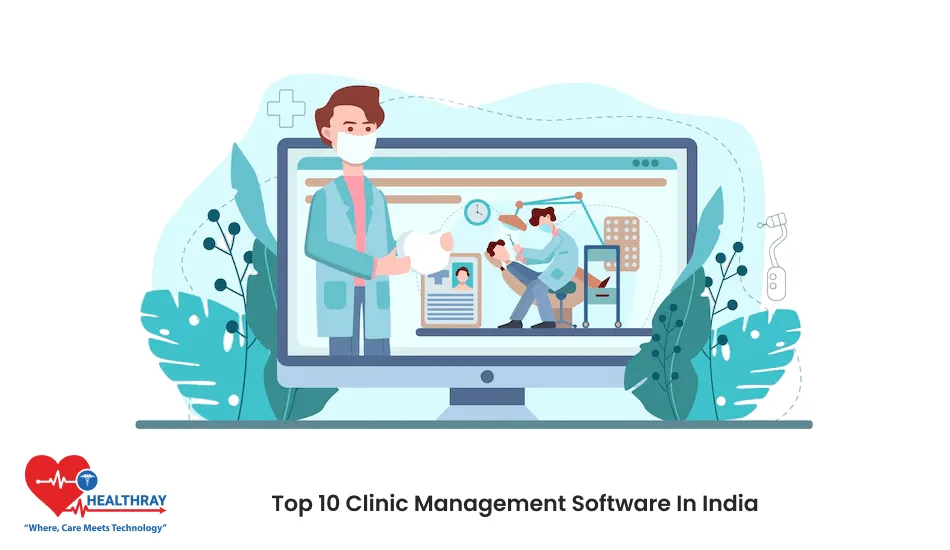The short answer: Specifically, they are consolidating the patient data which facilitates the obtaining, sharing and interpretation of data by clinicians and hospital staff by hospitals. It’s a little bit less time spent on paperwork, and a little bit more time with patients. But there’s more to the story than just convenience. Current electronic health record (EHR) systems are transforming the way health care organisations are conducted, leading to better diagnostics, higher accuracy in treatment and better patient experience.
This article explores how EHRs are changing hospitals and clinics in particular, including emerging trends such as AI-aided diagnosis as well as improved data exchange between hospitals and clinics. Whether you’re a healthcare professional, hospital administrator, or doctor, understanding these transformations can offer insights into how EHR Software could benefit your work and, more importantly, your patients.
The Core Benefits of EHR Solutions in Modern Healthcare
Enhanced Patient Care
Real-time access to patient information exists for clinicians via EHR systems. Physicians can better respond in a timely manner when they have a global view of each patient past treatments, allergies, drugs and more. As a result, health patients have an enhanced clinical status and fewer medical mistakes. For instance, an EHR may promptly and automatically recognize a patient’s allergy history, thus reducing the risk of administration with medications that can be contraindicated.
Efficiency in Clinical Workflows
EHR systems reduce manual paperwork and streamline daily tasks, allowing clinicians to spend more time with patients. Automating or simplifying charting, medical record review, and interdepartmental record dissemination, for instance, are only a few. By removing a portion of the administrative burden and consequent efficiencies, this efficiency not only enhances the quality of patients’ interactions with health care providers, but also mitigates health care provider burnout.
Data Centralization and Accessibility
EHR systems develop a single, unified, verifiable and password protected truth core for all authorized employees through the consolidation of the entire patient information. This is a specific issue in the hospital, where a patient has a series of specialist clinicians. Because EHRs will not necessitate the duplication of information, errors in the information are minimised and data purity maintained. For instance, if a patient goes to a GP, and then a cardiologist, in both medical situations, they have access to the most current data to enable them to provide consistent, reasoned care.
Key Trends in EHR Solutions

Interoperability and Data Exchange
One of the most pressing advancements in EHR systems, for that matter, has been the drive for interoperability/ seamless exchange of information between healthcare institutions and providers. Better coordination is made possible by interoperability, which allows patient data to flow between clinics, hospitals, and specialists without duplication or information loss. Using others’ standards, like Fast Healthcare Interoperability Resources (FHIR), clinicians can better share data among systems, which benefits teamwork and lowers errors. This trend is highly important, because it grants every provider an integrated vision of the patient’s clinical record, for example, for patients with burdens traded between facilities of each type.
Artificial Intelligence Integration
Health (electrocardiographic heart) event recorders are evolving from basic data loggers to deep, predictive agents by way of use of artificial intelligence in many instances. Using data obtained before, machine learning algorithms can be used to process patient data in order to identify patterns, assess risk, and even suggest possible diagnoses. AI, e.g., can detect patterns in lab data that a human eye could not detect and also assist medical doctors to identify possible health problems sooner. Natural language processing (NLP) also could aid in the organization and interpretation of unstructured data such as medical notes. In the end, this integration benefits patients by helping health professionals access data-driven knowledge.
Telehealth Integration
The pandemic underscored the necessity of telemedicine, and telemedicine has now become a fixture in contemporary medicine. When telehealth software solutions are configured to integrate with EHR Software Solutions, healthcare clinicians can access and modify patient data in a virtual visit experience just as they do in a clinical office. This not only maintains continuity of care but also allows patients to receive immediate medical attention without a direct visit. Telehealth functionality also expands access to patients living in rural locations and as a result, expands the range of quality healthcare to the greater population.
Patient-Centric Design and Engagement
In the modern EHR solutions, there are increasingly number of feature sets involving patients actively in their own healthcare. This encompasses intuitively accessible patient portals, which enable interaction with providers, access to records, and scheduling appointments. Moreover, patients can keep a tab on the lab results, assess their progress and remain vigilant with regards to the treatments thereby holding a more active role on their own health journey. EHRs can further improve treatment adherence and the level of patient general satisfaction with healthcare provision by informing and engaging the patient with the health topic and decision in which choice to make.
Future Innovations and Challenges in EHR Solutions
Data Privacy and Security
Data protection of the patient continues to be a major concern as the EHR networks are chaining together. Healthcare entities need to agree investments in effective security mechanisms, including encryption, multi-factor authentication and continuous surveillance due to current levels of cyberthreat. There is a necessity to comply with legislation such as HIPAA in the United States and GDPR in the European Union that dictate sharing and storing of confidential health information. The healthcare sector has to find a compromise between rigorous data treatment formalities and the imperative for data exchange at the patient level, all the while preserving security and utility.
Advanced Data Analytics for Proactive Healthcare
EHR systems are progressing from elementary data storage to advanced analytics, such as predictive and prescriptive analytics. Medical practitioners can predict these trends and diagnoses by analyzing large volumes of patient data in advance. This change is conducive to the population health management which enables the specific intervention to achieve better overall health results. For example, analytics from electronic health records (EHRs) may identify groups that are more at risk for worsening chronic diseases such as diabetes or hypertension, and preventive care may be recommended before disease progression becomes worse.
Regulatory and Compliance Considerations
Health care providers working with EHRs are subjected to a continual problem of following changing regulations. The health records (EHR) systems are mandated by Food and Drug Administration (FDA), and other legislation (including the US 21st Century Cures Act) to enable easy data exchange so as to improve patient access and interoperability. Under the strength of this law, providers are prohibited from engaging in “information blocking,” which means any activity that limits the flow of electronic health information to the information provider without it being authorized by the patient. Healthcare facilities are forced to change their practices and systems, but they also introduce financial, staff, and system update struggles.
Real-World Examples and Case Studies
Example 1: AI-Powered Diagnostics at VIMS Hospital
At the VIMS Hospital AI has been incorporated into the EHR system to enhance the diagnostic yields and the patient care. By analyzing vast datasets, the system assists clinicians in identifying early signs of conditions such as heart disease or diabetes, where patterns can be subtle but significant. The application of this type of AI integration has, however, proved especially useful to high-risk patients, in whom early detection allows a more preventative approach to care with reduced rates of hospital readmissions. Based on EHR-based AI-driven firings, clinicians can observe patterns in patient records that would otherwise be missed, with implications for better diagnostic accuracy and customized care.
Example 2: Telehealth Integration at Prayosha Clinic
COVID-19 pandemic facilitated the Prayosha Clinic’s improvements in telehealth (the facility adopted the telemedicine capabilities into its electronic health record system). The ability of the providers to have access to the up-to-date patient information during video consultations and to take notes in real-time, has made the shift between virtual and face-to-face care smooth. Treatment continuity was maintained by rendering the same standard of care to the patients via remote access that would have been provided in the clinic. Because they could obtain healthcare services without having to travel great distances, patients in underserved or rural areas also benefited from this integration.
Example 3: Interoperability Success at Lilavati Clinic
Lilavati Clinic, a centre for advanced healthcare systems, has paid particular attention to the practice of achieving the state of full interoperability in the EHR network. Through the adoption of interoperability standards, Lilavati Clinic made it possible to transfer information among the various sites and to health care other providers. This has led to the improvement of transfer of patients and referrals to different specialties, as on accessing to a complete and up-to-date medical history is now accessible to each healthcare provider involved in the patient’s care. The interoperable EHR system provides an opportunity to save redundant testing and guarantee the homogeneity of patient care, and it has a model for other health systems to optimize their data sharing mechanisms.
Conclusion
Healthcare today has surely transformed because of EHRs, towards being more patient centric, network driven and more efficient. These systems allow better, more personalized healthcare to be delivered through a combination of telehealth support, enabling smooth data sharing, and the diagnosis enhanced by integration with artificial intelligence. EHRs allow medical staff to focus more on patient care by aggregating patient information and by reducing manual effort and optimizing workflows.
Health care providers are faced with the challenge to reconcile very strict security and compliance needs with data accessibility as the evolving health care electronic record technology progresses. The healthcare of the future will continue to be driven by technology such as improved data privacy mechanisms, interoperability, and big data analytics, which will enable providers to better predict the needs of patients, give personalized therapies and drive improved outcomes broadly.
For hospitals, administrators, and healthcare professionals, investing in a hospital management System is more than a tech upgrade; it’s a step toward building a more connected, proactive, and resilient healthcare system that meets the demands of both today and tomorrow.





